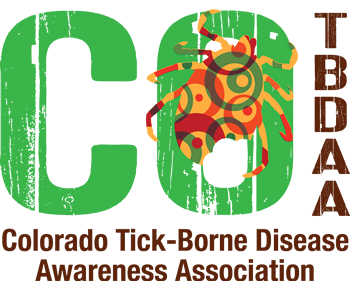
Diagnosing Tick-Borne Disease
Diagnosing Tick-Borne Disease
There over 20 tick-borne diseases/conditions, currently known to occur throughout the US and many of these diseases have impacted Colorado residents and/or their pets. Lyme disease is the most reported tick-borne disease and has been reported in all of the 50 United States.
Companion Animal Parasite Council reports increasing numbers of Lyme disease, Anaplasmosis and Ehrlichiosis in dogs nationwide and in Colorado.
The sooner a tick-borne disease or condition is properly diagnosed and treated, the better.
Lack of timely, accurate, diagnosis and treatment may result in adverse outcomes for patients of tick-borne diseases/conditions including extended treatment, hospitalization, disability or death.
Awareness of potential tick exposures, as well as awareness of the signs and symptoms of the multiple and variable diseases/conditions and the limitations of laboratory testing is critical to early diagnosis and treatment for best patient outcome.
Suspect Tick-Borne Disease?
Infectious disease doctors at Walter Reed Medical Center in Bethesda, MD state in this new study… “The availability of laboratory testing for tick-borne diseases is limited, especially in the acute setting. Therefore, if a tick-borne disease is suspected, empiric therapy should often be initiated before laboratory confirmation of the disease is available.”
Tick-borne illnesses and conditions may manifest in vague, classic or dramatic and unusual presentations. Many of the tick-borne infections can initially present as a flu-like syndrome that are often misdiagnosed as viral other illnesses. Initial disease symptoms may not appear for days, weeks or even months after exposure to the infection.
Per the CDC, diagnosis of Lyme and many other tick-borne diseases must be made clinically in many cases. Testing for tick-borne diseases is variable in both availability and reliability depending on the infection and the timing of testing. Often patients may require treatment before laboratory tests can return a confirmation of disease, and negative test does not always mean no disease.
Travel Risks
Additionally, individuals and their pets returning to Colorado from travel out of state or country may not be aware of their tick exposure or risk of diseases in other regions of the US or the world. Colorado medical care providers are then faced with diagnosing diseases they may not have any previous experience with. It is important to consider tick-borne infections if a patient becomes ill after an exposure to ticks or their habitat, including contact with pets. For instance, a flu-like illness following a camping trip even if the patient did not notice a tick-bite, or a patient that owns pets or works with animals.
Co-Infections
A patient may acquire ore than one infection from a single bite, or through multiple bites. Co-infections may require different treatment. Co-infections such as Bartonella and Babesia can exacerbate the symptoms of a Lyme infection. Some co-infections require different treatment than a Lyme infection. When a patient does not respond to treatment for a particular disease, or their symptoms reappear after treatment, co-infection should be investigated further.
Is it Lyme Disease?
The rate of infections with B. burgdorferi and other tick-borne pathogens are increasing and researchers are discovering new, previously unknown species that cause Lyme disease and Lyme-like illnesses.
Lyme is the most prevalent vector-borne disease in the US and ranks in the top 6 of all reported infectious diseases in the US behind, Chlamydia, Gonorrhea, Salmonella, and Campylobacteria (2018). However, the CDC estimates that Lyme is under reported by 10 times, which would make it the 3rd most common infectious disease in the US. Annual case numbers continue to increase, with CDC estimates reaching over 300,000 annually; over 400,000 in 2017.
Colorado Department of Public Health and Environment reported 8 cases of Lyme disease in Colorado in 2019, the largest number of annually reported cases ever reported in Colorado.
The controversy and confusion about Lyme diagnosis and treatment leaves many Coloradans undiagnosed, undertreated, and vulnerable to long-term, preventable, health problems from Lyme and tick-borne infections and remains a clinical diagnosis per the CDC.
Lyme disease is spreading worldwide, with multiple Borrelia species causing a broad range of clinical symptoms that mimic other illnesses. Lyme disease in its early stage can often be effectively treated, but persistent infection, complex pathology affecting multiple body systems and organs, biofilm and cyst formation, and associated tick-borne co-infections make chronic Lyme disease difficult to diagnose and complex to treat. Two standards of care further complicate this issue.
For more information and resources on the diagnosis and treatment for Lyme and other tick-borne diseases/conditions please visit:
Children and Tick-Borne Disease
Initial symptoms common to many tick-borne diseases are often flu-like and may include:
- Fever (may be high and/or relapsing in nature)
- Chills
- Sweats
- Rashes (multiple presentations or no rash)
- Headache
- Stiff neck
- Muscle-aches
- Fatigue
- Nausea/vomiting







